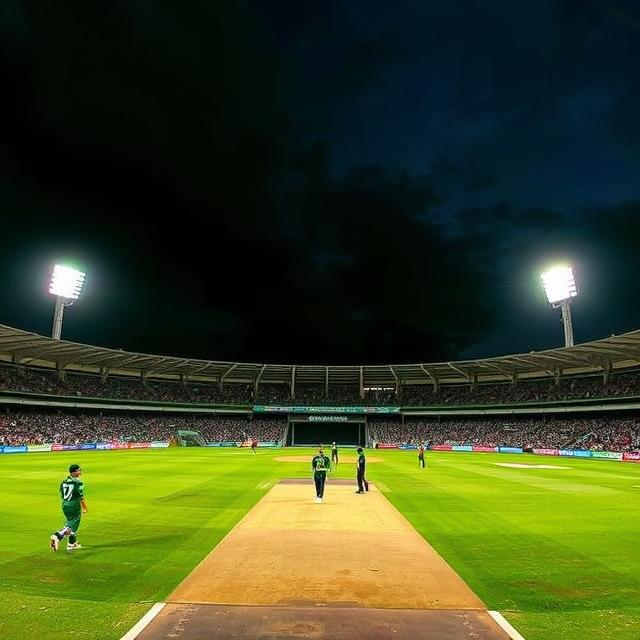Reasons for the Lack of Cricket Grounds in Pakistan: A Deep Dive

Reasons for the Lack of Cricket Grounds in Pakistan: A Deep Dive
Cricket, a national obsession in Pakistan, deserves playing fields that match the fervor of the fans. However, the reality often falls short of the ideal. This article delves into the multifaceted reasons behind the apparent lack of adequate cricket grounds, exploring the economic, social, and political factors that contribute to this persistent issue.
Why are cricket grounds scarce in Pakistan? The answer is more intricate than a simple shortage of land. It’s a reflection of a complex interplay of issues that have evolved over time.
Exploring the Socioeconomic Landscape:
The distribution of cricket grounds isn’t random. Factors like urbanization, poverty, and the uneven development of regions frequently determine ground availability. Poorer areas often lack the resources for building, maintaining, or even accessing appropriate playing facilities. This disparity is reflected in a concentration of facilities in more affluent regions, neglecting the cricketing aspirations of many communities.
A critical aspect is the cost of land acquisition. In rapidly urbanizing Pakistan, land values are rising exponentially. This makes constructing new grounds a significantly costly proposition for organizations, particularly those focused on grassroots development. Further complicating the matter is the persistent issue of corruption and bureaucratic red tape that often hampers such projects.
Lack of adequate funding is another key contributor. While the Pakistan Cricket Board (PCB) plays a vital role in cricket development, funds dedicated specifically to ground construction and maintenance often prove insufficient to meet the growing demand. Furthermore, sustaining grounds requires ongoing investment in upkeep and repairs, which isn’t always a priority, and creates a vicious cycle of neglect.
The Political Landscape and its Influence:
The political landscape also casts a long shadow over the availability of cricket grounds. Political priorities and decisions often overshadow the long-term needs of grassroots cricket. Lack of consistent government support for infrastructure development for sports facilities, especially in underserved communities, is a significant factor in the scarcity of grounds.
Political interference and corruption can further exacerbate the situation. Projects intended to build cricket grounds might be diverted or delayed due to various political machinations, leading to further setbacks in the availability of facilities for aspiring players.
Infrastructure Deficiencies:
Pakistan, like many developing nations, faces challenges related to infrastructure. The lack of proper water management systems, drainage, and lighting can drastically limit the usability of cricket grounds, particularly during inclement weather. These practical obstacles, often overlooked, are crucial limitations in establishing or maintaining quality grounds.
The Role of Community and Ownership:
Beyond the broader issues, the involvement of the local communities themselves is essential. Grassroots cricket relies heavily on the support and participation of local organizations, schools, and clubs. Lack of community ownership and initiative, sometimes due to a lack of awareness or understanding of the importance of the facilities, contributes to the challenges in development.
Engaging local communities in the construction and maintenance of grounds fosters a sense of ownership and responsibility, ensuring that these facilities remain vital components of the local landscape.
Addressing the Challenges:
The situation requires a multi-pronged approach involving stakeholders from diverse sectors.
1. Increased Government Funding: Prioritizing allocation of funds towards sports infrastructure development, especially in underserved communities, is crucial.
2. Collaboration and Partnerships: Joint ventures between the PCB, provincial governments, and local communities can bolster efforts and ensure equitable access.
3. Transparency and Accountability: Implementing strict measures to combat corruption and ensure the transparent use of funds is paramount.
4. Capacity Building: Providing training and support to local communities on ground maintenance and upkeep can ensure sustainability.
5. Grassroots Initiatives: Fostering community involvement in the planning, construction, and management of grounds fosters a sense of ownership.
6. Addressing Infrastructure Challenges: Prioritizing the necessary infrastructure, such as drainage and lighting systems, ensures grounds are functional throughout the year.
7. Promoting Public-Private Partnerships: Engaging the private sector to support ground development can provide essential financial and logistical resources.
The lack of cricket grounds in Pakistan represents more than just a sporting issue; it reflects the broader societal challenges that impact the development and access of opportunities for all segments of the population. By understanding these root causes and fostering collaboration, Pakistan can create the playing fields necessary for nurturing the talent and passion for cricket that thrives within its communities. This will not only enrich the lives of those involved but also contribute to the nation’s overall development.
Conclusion:
Addressing the persistent shortage of cricket grounds in Pakistan requires a comprehensive, multi-faceted approach that tackles the complex interplay of economic, political, and social factors. The solution necessitates a collective commitment from various stakeholders, fostering collaboration and prioritizing the needs of underserved communities. By tackling these root issues, Pakistan can foster a more equitable and sustainable cricket landscape that nurtures the talent and passion of the sport across the nation.